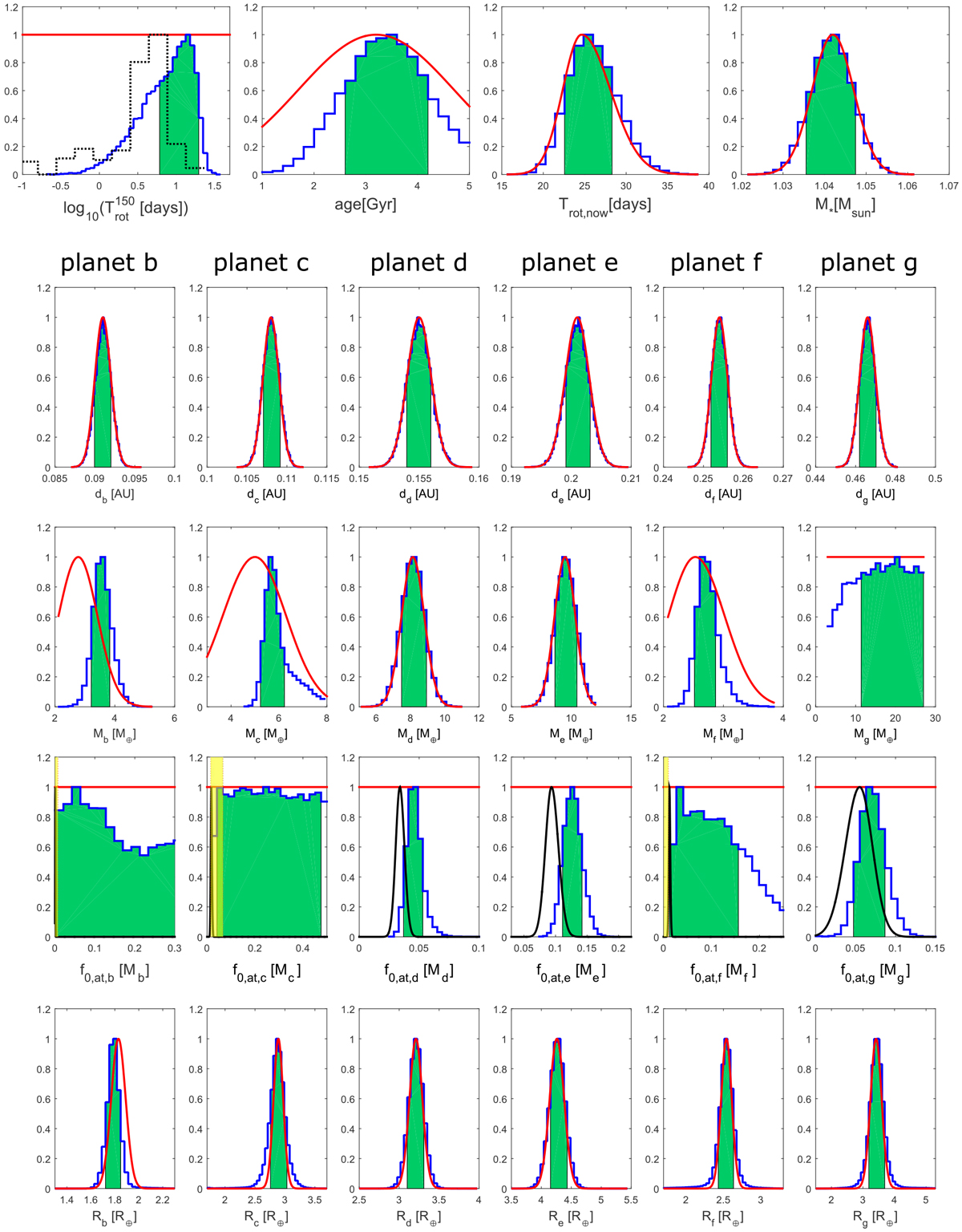Fig. 1

Posterior probabilities for the considered Kepler-11 system parameters. Top row: stellar parameters from left to the right: rotation period at an age of 150 Myr, age of the system, present-time stellar rotation period, and stellar mass. Second row: planetary orbital distance (d). Third row: planetary mass. Forth row: initial atmospheric mass fraction (i.e. at an age of 1 Myr). Bottom row: planetary radius. The blue solid lines indicate the posterior probabilities, the green shaded areas correspond to the 68% HPD credible intervals, and the red solid lines are the priors. The dashed black line in the top left panel shows the distribution measured for solar mass members of ≈150 Myr old open clusters (Johnstone et al. 2015a). The black solid lines in the fourth row illustrate the present-time atmospheric mass fractions obtained using the approximation given by Lopez & Fortney (2014, solid line) for the posteriors given by the MCMC. The yellow shaded areas in the fourth row are the initial atmospheric mass fractions given by the accretion models of Ikoma & Hori (2012) for a disc temperature of 550 K at 0.25 AU, the location of planet f, and a disc dispersal time of 1 Myr (see text).
Current usage metrics show cumulative count of Article Views (full-text article views including HTML views, PDF and ePub downloads, according to the available data) and Abstracts Views on Vision4Press platform.
Data correspond to usage on the plateform after 2015. The current usage metrics is available 48-96 hours after online publication and is updated daily on week days.
Initial download of the metrics may take a while.


